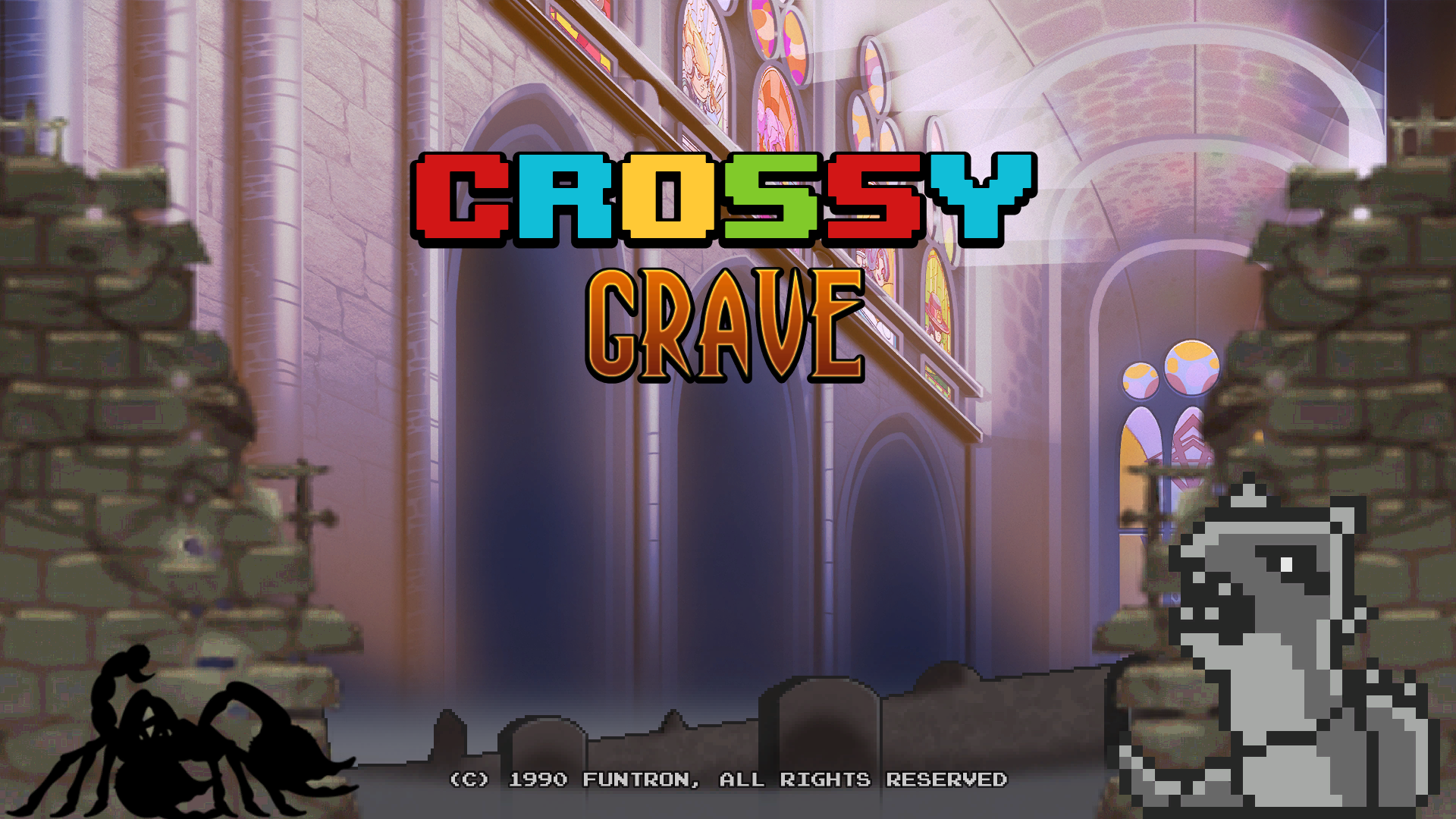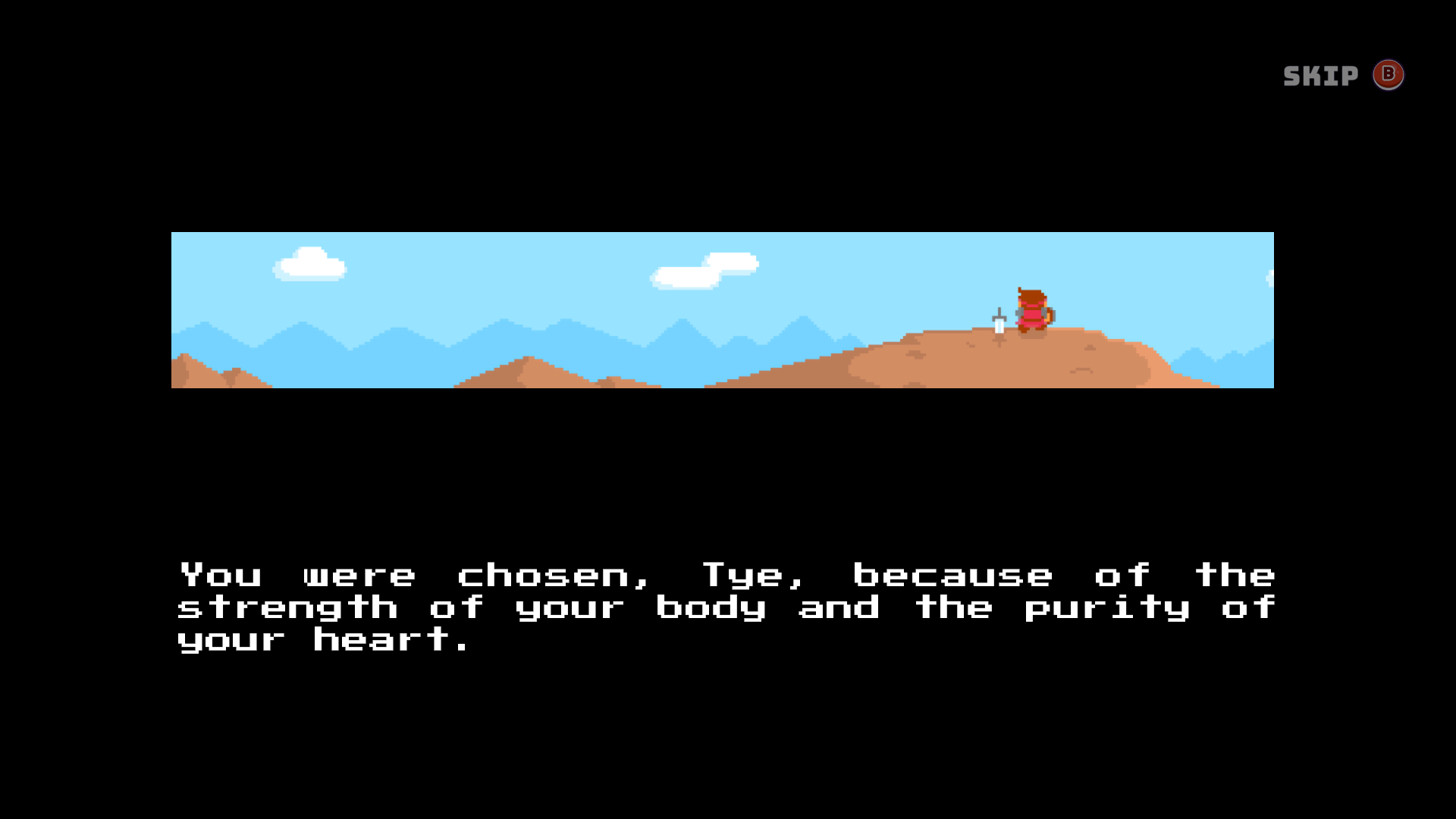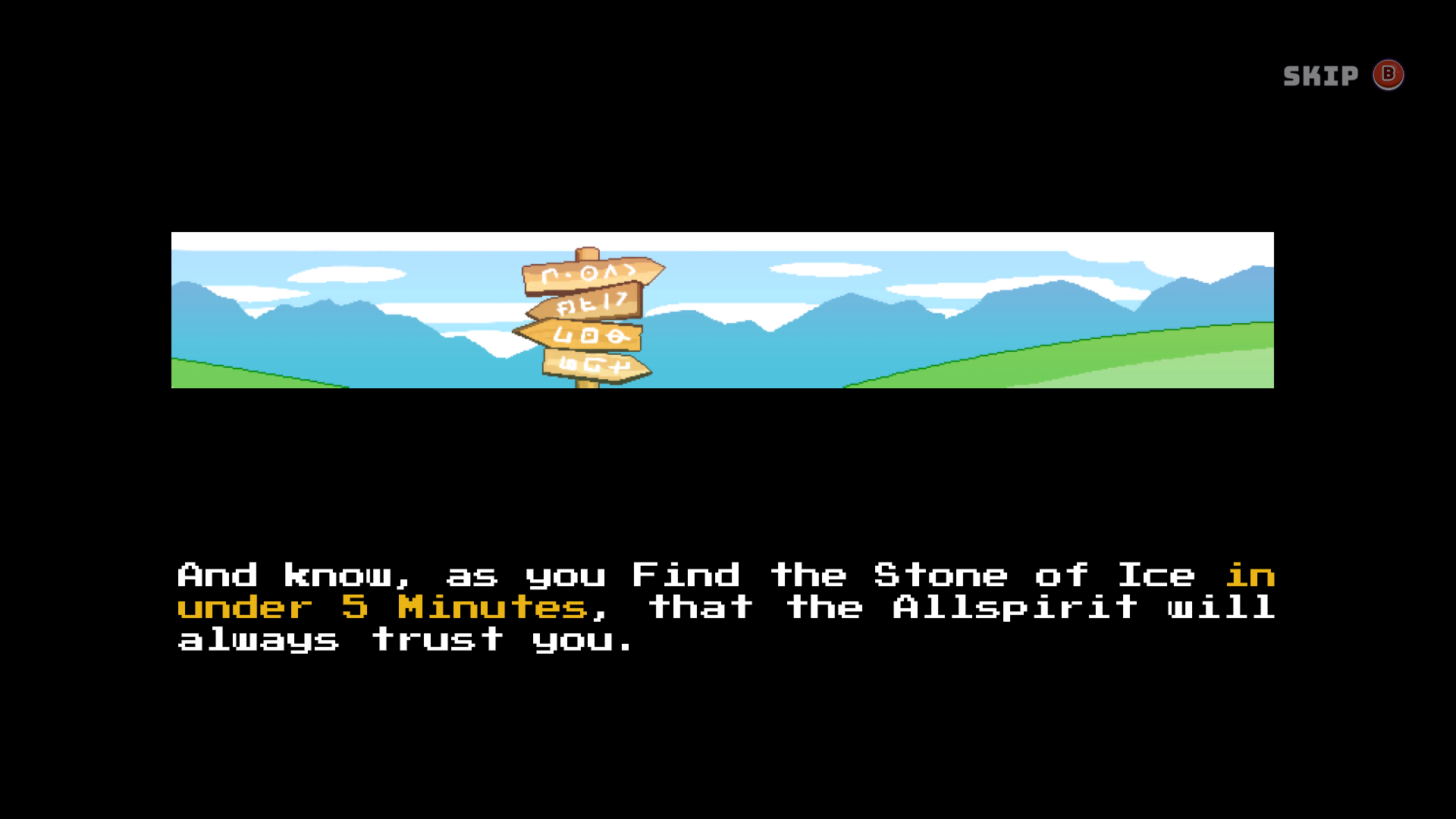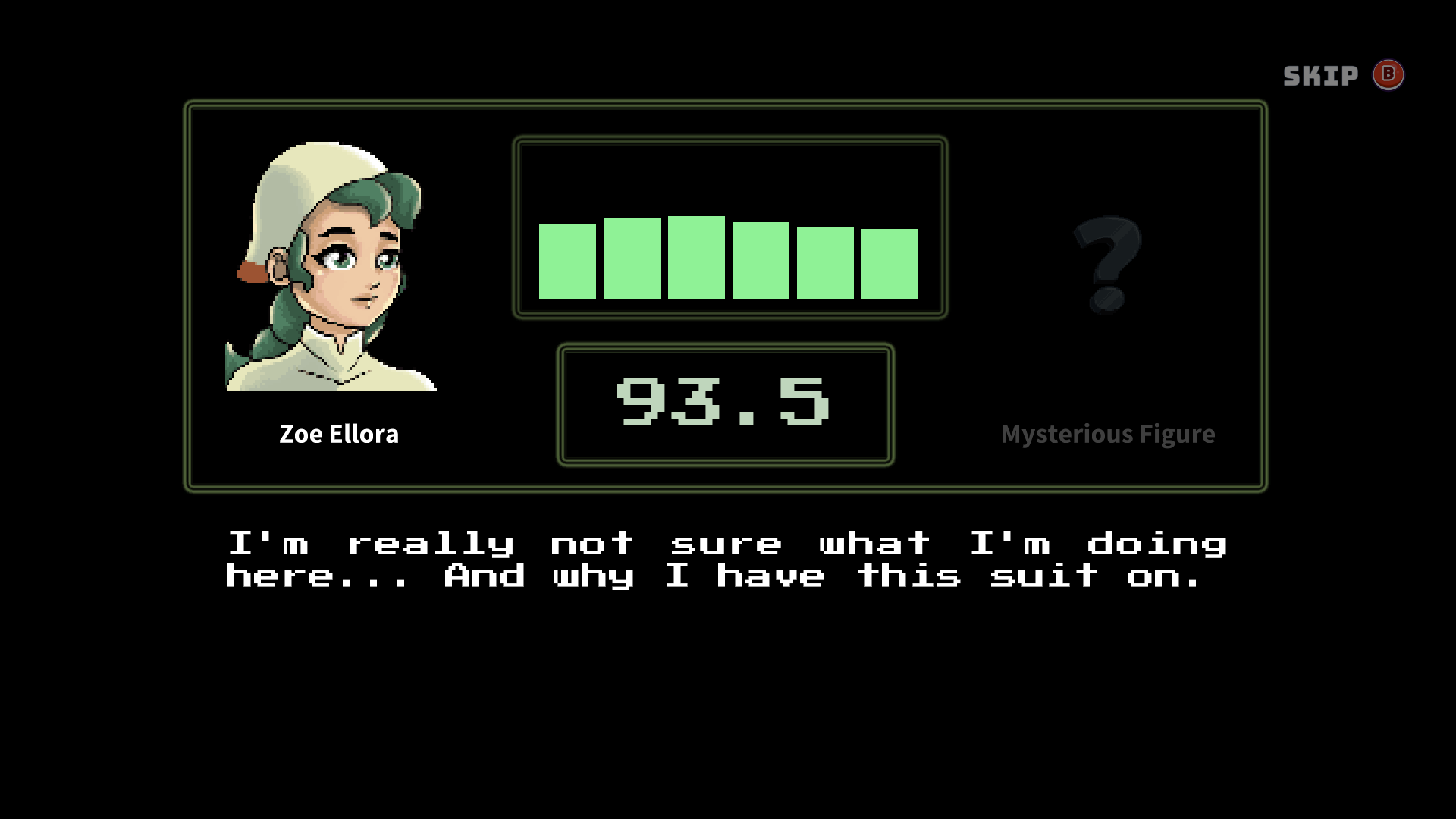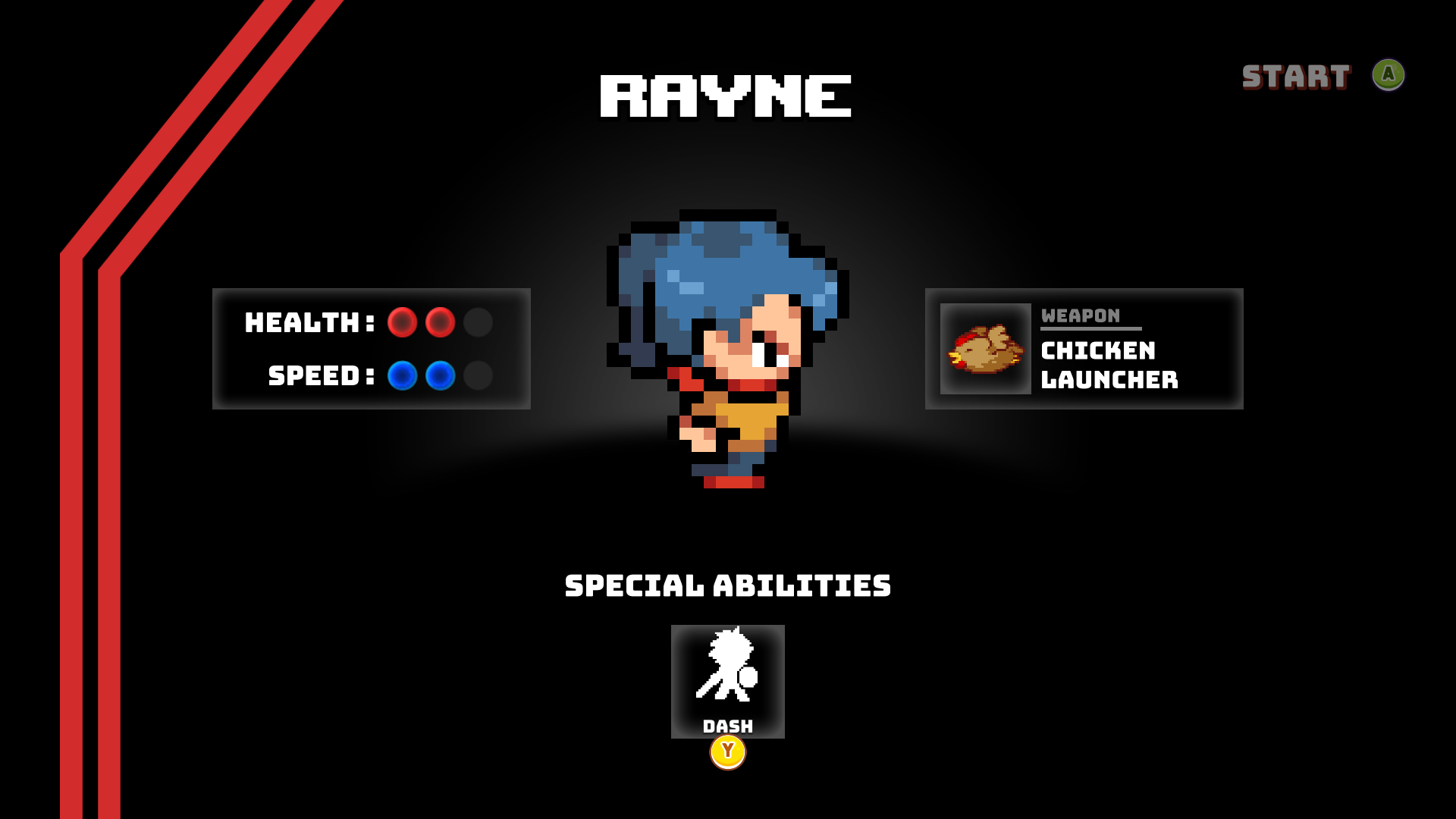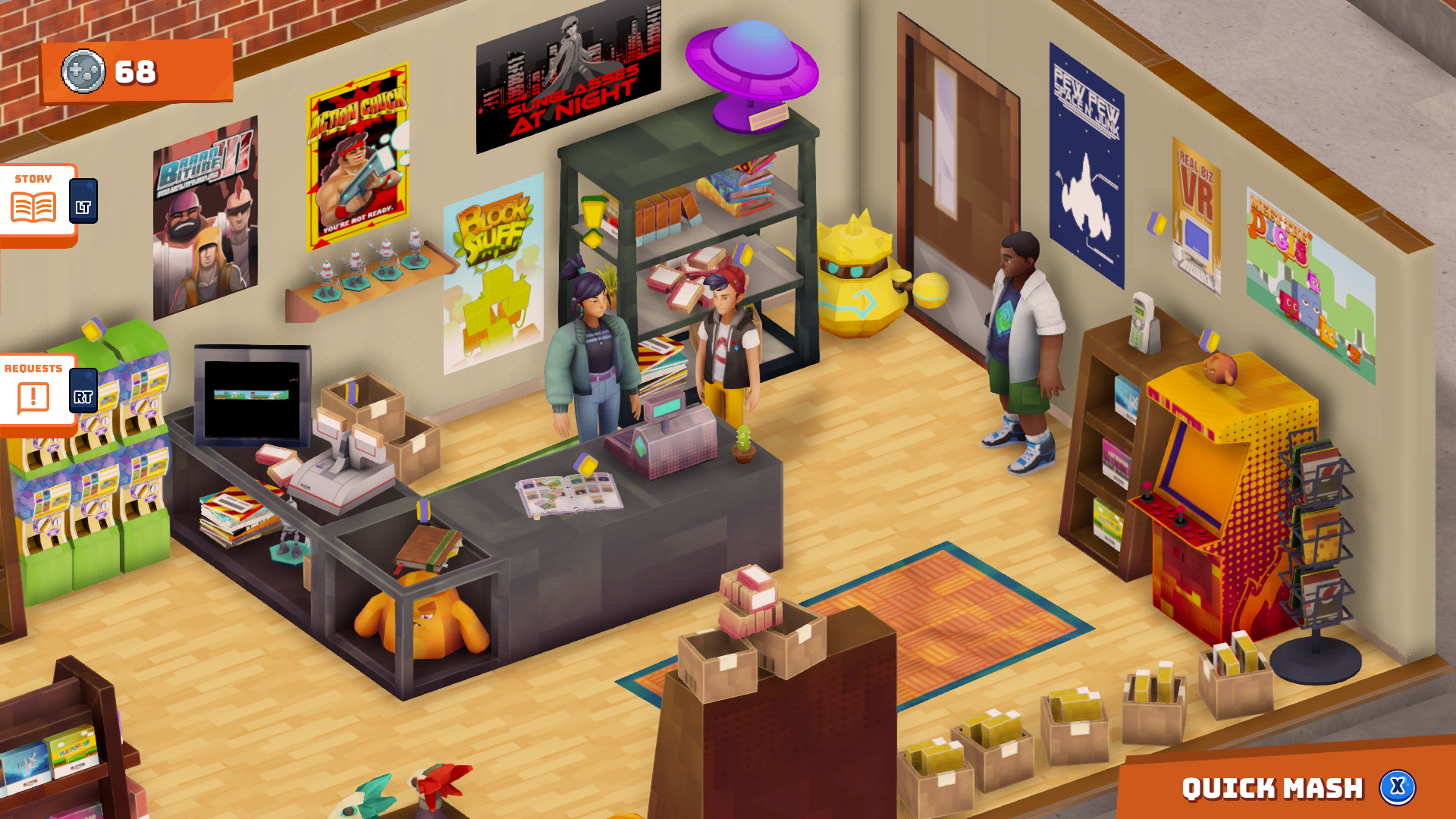
Supermash
Posted March 18th, 2020
I’m really proud of ANGELINA, my game-designing AI research. It’s never really made a game that was great - some are charming or have a special meaning now in retrospect, but none of them are chart-toppers. The real appeal of the project, I think, is the system as whole - the space of all the possible things it could make, the weird gems it pulls out, how we perceive and relate to the system. And that’s exactly how I feel about Supermash, a new game about making games by mashing genres up. I want to tell you a little bit about it today, so I wrote up some notes while playing. I’m hugely grateful to Owen Bell, lead programmer on Supermash, for talking to me about how the game generates games, which really explained a bunch of systems very well, and highlighted some neat details as well. On with the explanations!
Supermash calls its generated games Mashes, appropriately, and you make them by using an experimental games console (all explained in charmingly illustrated little story beats). When you make a new Mash you’ll start by picking two genres from a list of six: JRPG, Platformer, Shoot ‘Em Up, Stealth, Action Adventure, and Metrovania - you can also pick the same genre twice, so JRPG/JRPG is a valid combination. Once you’ve picked your genres, you can start playing if you want, that’s it! But if you prefer you can also modify a few additional things. Game length and difficulty can always be changed, but there are also slots for things called Dev Cards. Dev Cards are unlocked as you play, mostly as rewards for completing Mashes, and let you fix certain aspects of the generated game in place, like choosing the music, or which level the game is set in, which is a really smart way of letting the player shape the procedural generators a bit.
When you’re done, you hit play, and a few seconds later your Mash starts...
The first thing you’ll see is the game’s title screen, which is one of my favourite bits of Supermash. It’s very simple - you can see there’s two fonts being used here for the title, and some key art around the edges. If I show you some more title screens you can see a few other things:
Top-left is Stealth/JRPG, top-right is Platformer/Action-Adventure. So you can see there seems to be font sets and word sets for each game title too - for example, “Monsters” is a very JRPG word, and has a nice crunchy fantasy-esque font. You can kind of see patterns forming in where the key art lies too - background layers, some midground framing, and some characters ont he edges. It’s simple, but it really does work, I would totally follow a Twitterbot that just posted these all day long. The artwork throughout Supermash is tip top.
After that you’ll see a little game intro sequence. Normally these consist of three screens, each with a little illustration and some accompanying story test. Here we see our genre selections coming through more clearly. One of the two chosen genres dictates the structure of the introduction and its thematic content.
Interestingly, most of this introduction is not procedural. You might expect that this would be heavily generated, each sentence pulled from a big corpus to invent new heroic adventure plots. But actually Supermash has a core of narratives for each genre, so the Action-Adventure plots are about a group of kids, the magic Wordstones and the Allspirit that protects them. There are some procedural elements here though, such as the name of your character which varies depending on who you’re playing as. You can also probably see the bit in the third panel where they’ve inserted the mission objective, (which sometimes stands out quite jarringly, but in a way I kind of enjoy).
Some of the variants create some good humour out of this though - for example, Stealth genre intro sequences feature this Metal Gear Codec tribute, and will insert your character dynamically into the speaking role, such as this JRPG heroine. The dialogue here I think is selected because of the genre mashup, as if I was playing a Stealth character here the intro would be played straight. I’ve not done enough Stealth genre games to be sure of this though.
After this, you get a little character select screen where they introduce you to the character you’ll be playing. This is dictated by the primary genre, I believe, but there’s some wiggle room. The playable characters have loads of humour and style, I’m especially fond of Cyber Guy and all of the JRPG characters. You also get given some starting items or skills, which are randomised but tied to the genres you’ve picked. This is where things begin to get interesting.
So what does a Supermash game actually look or play like? Answering this question is complicated, because each genre mashup behaves slightly differently, and there are lots of edge case and exceptions. Hopefully we can focus on getting a general idea of structure across, and you can discover some of the edge cases for yourself when you play the game!
Each Mash has a primary genre (the first genre you select) and a secondary genre (the, uh, second genre you select). The primary genre defines a lot of the initial tone of the game: it controls the introductory story, the level space you see when you start, and a lot of the fundamental controls you start with too.
So to give an example, if our lead genre is chosen as JRPG then we’ll start out controlling our character in a typical JRPG space (such as a village, a dungeon, or a fantasy overworld). That’s our structure. JRPGs also have a way of triggering combat, which this game will also take if JRPG has the ‘lead genre’ role. One is random battles, Final Fantasy-style, and the other is having monsters visible in the world that you can bump into, more Earthbound-style. But when this trigger happens - whether randomly or by hitting a monster - we switch to a new screen, and this new screen may be governed by the supporting genre.
If our supporting genre is also JRPG, we’ll see a standard JRPG battle like in a Final Fantasy game, with spells and ATB gauges filling up. But if we’re playing an Action-Adventure as our supporting genre, the screen will look like a JRPG battle screen, but the monsters and the player will move around like in a 2D Zelda game, firing arrows and clashing swords. This is one of Supermash’s great strengths - the results are sometimes so surprising that just realising what is going on elicits a laugh or an eyebrow raise.
In the other genre mashups, the subarea transitions are often just portals that you have to optionally travel through. This can feel a bit artificial, and in fact you can complete many of the games without ever visiting a subarea, which means you remain in the lead genre space the whole time. But part of the joy of playing these mashups is seeing how all the different jigsaw pieces fit in and play off each other. Ultimately, when making something this complex, sometimes you just need to glue two things together, and a game like Supermash needs those good stable fallback options to connect things together when you’ve asked it to do something really weird.
Every game has a core objective, which is randomly based on what options are available to players. In a JRPG, for instance, it might be to gain a certain amount of gold. There are also some special combinations that can come out that have extra relevance to Supermash's overarching story about the kids and their magic games console. On top of your main objective you'll also have modifiers that trigger off of certain actions, so travelling in a straight line for a long time might spawn some gold, or pressing the jump button might lock your controls for a few seconds. These modifiers are really unpredictable, which can create some cool scenarios but also, occasionally, completely mess you up.
Sometimes the mash makes things fairly straightforward - sometimes platformer mashups just feel like regular platformers with a few twists - but other times things will combine in ways that were hard for you to predict. One of the weirdest games I played was a stealth JRPG, where I explored a military base filled with dragons who patrolled with vision cones. In 2020 it's easy to talk about AI and personify the algorithm here, but really the reason this is fun is because you're seeing how the developers modelled bits of game genres, and comparing that to your own expectation, which often has very enjoyable results.
I don’t want to talk too much about the games themselves, as this blogpost is already getting quite long, but I will say that I did find it fascinating to see the variety of outputs. Some games are fast and snappy, while others have unusual rule combinations that make them really slow or hard to finish (and occasionally literally impossible). Of course, if you had to play this single game, or you’d paid for it, that might be a problem, but in Supermash you just quit the Mash if you don’t like it, and make a new one. You’re not here to play a single game, you’re not even here to get a constant stream of smash hits, you’re here to explore the possibilities offered by this machine, which includes the good and the bad.
I explored mashups to test the limits of the game in all directions, but I also did find myself going back to certain mashups that I really enjoyed, and getting excited when my favourite character or power appeared. I also really enjoyed how much the game relishes the bizarre clashes it creates - art styles rubbing up against each other, hilarious game system crossovers that make no sense but you asked for. Most of the games I played were pretty forgettable, but the process of exploring as a whole was really pleasant, and that's really what the game is about - exploring the meta-space of possible games.
Supermash has a lot of charm, and a lot of love and hard work and clever ideas have been put into it. There’s a cool vending machine where you can get extra dev cards, and a delightful story that plays out as you learn more about the Supermash console. There’s even a scrapbook that shows you what game components you’ve seen, with some hidden surprises I don’t want to spoil here (but that were very cool to discover, and very inventive in terms of procedural generation in games).
If I was reviewing or recommending something like this, it’d be tempting to talk about it in terms of the games it designs, and whether they’re good or bad or not, but I think that’s a mistake. Supermash is a game that happens to contain procedurally generated minigames, just like Minecraft is a game that happens to contain procedural worlds. Some are terrible! Some are great. Some make you laugh. But the thing as a whole is worth appreciating, and I do think it’s worth checking out if you’re curious, especially if you think about procedural generation and game design. It’s kind of a marvel that it exists at all, and understanding it and picking it apart as you play it was quite satisfying, I found. I’m really glad that it’s been made and I hope it inspires people to try more stuff out like this in the future!
Supermash is currently available on the Epic Store and is coming to Switch in May. The developers say they're planning to add new genres and styles in the future too!
Posted March 18th, 2020.


